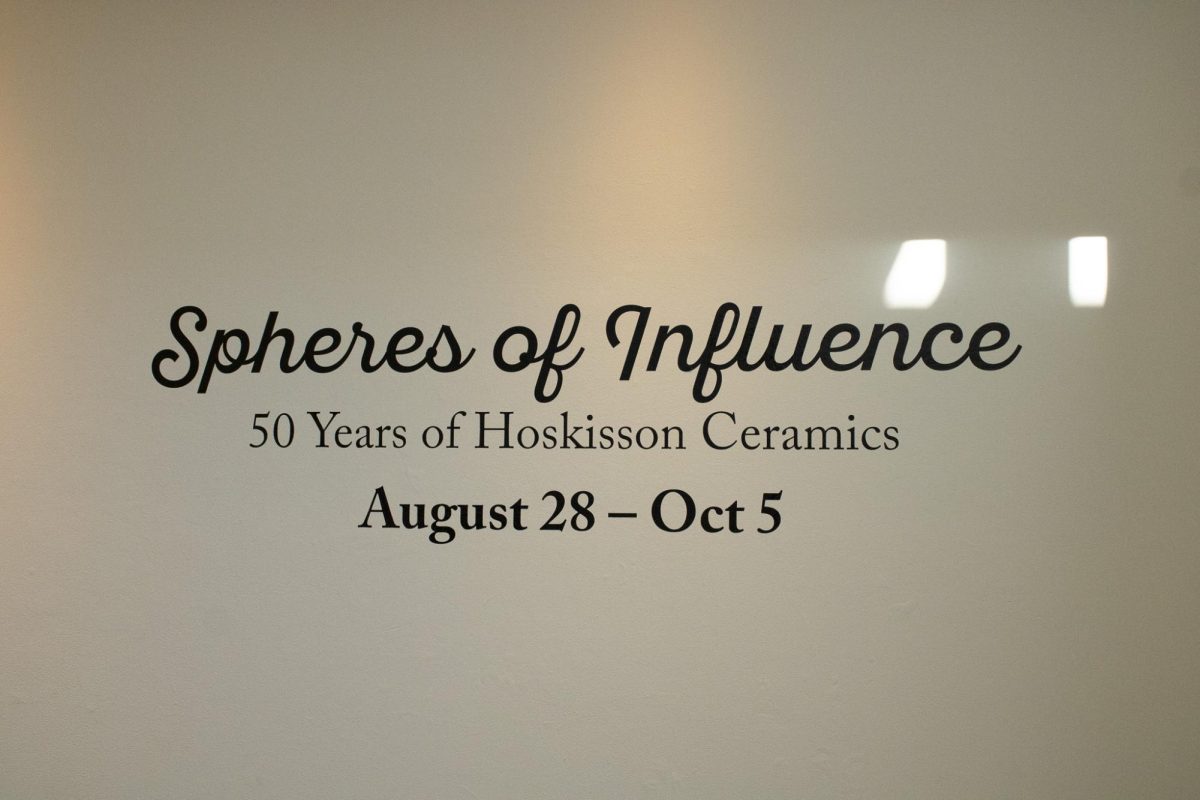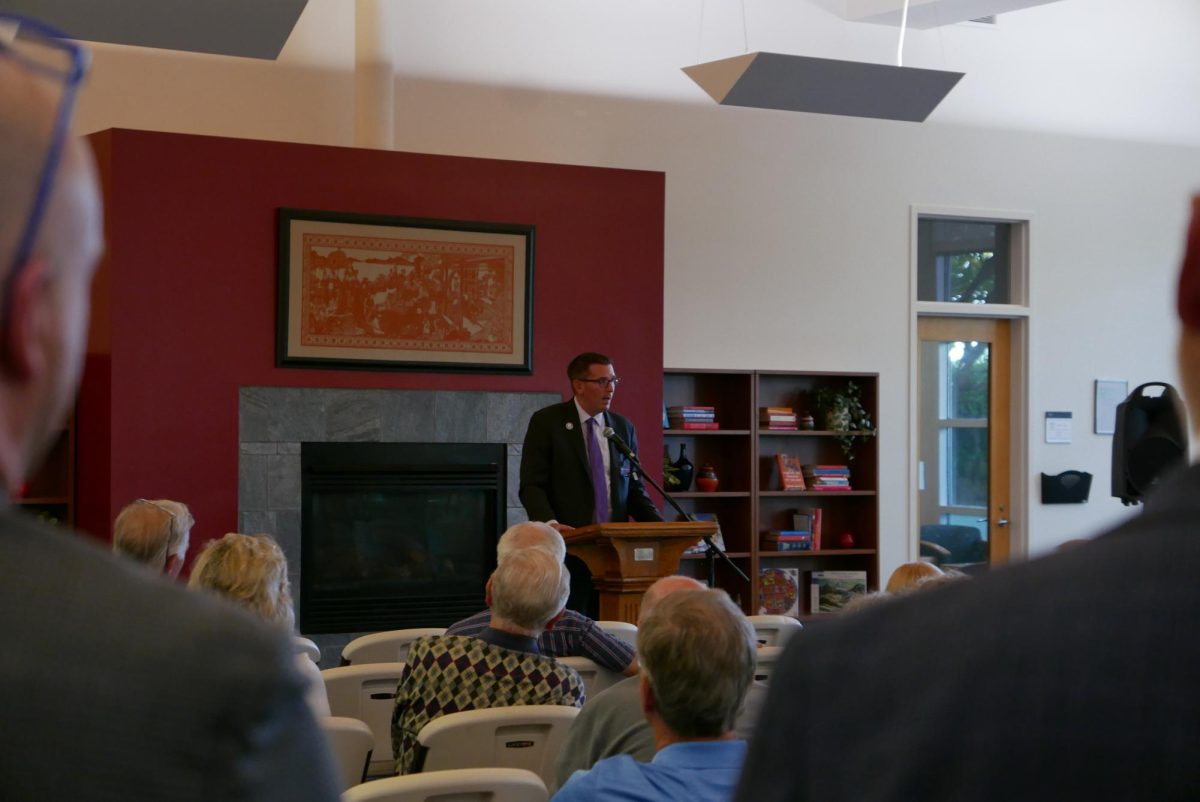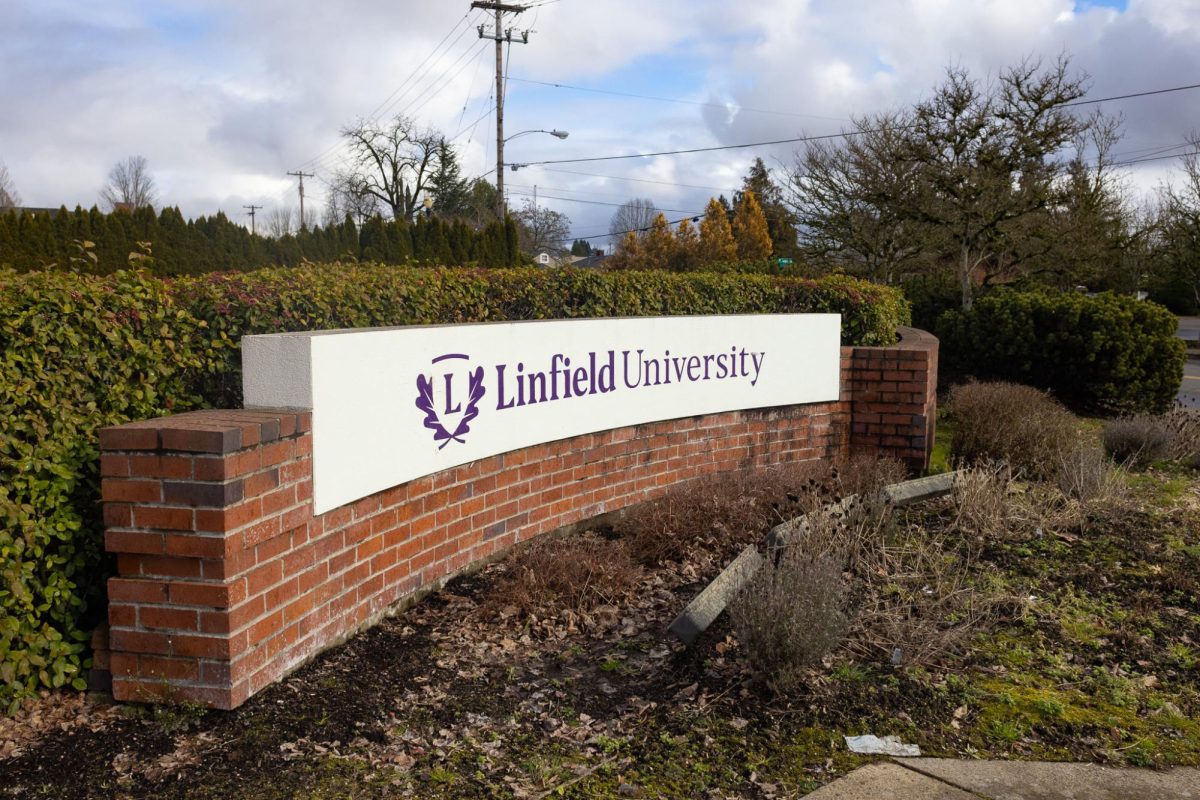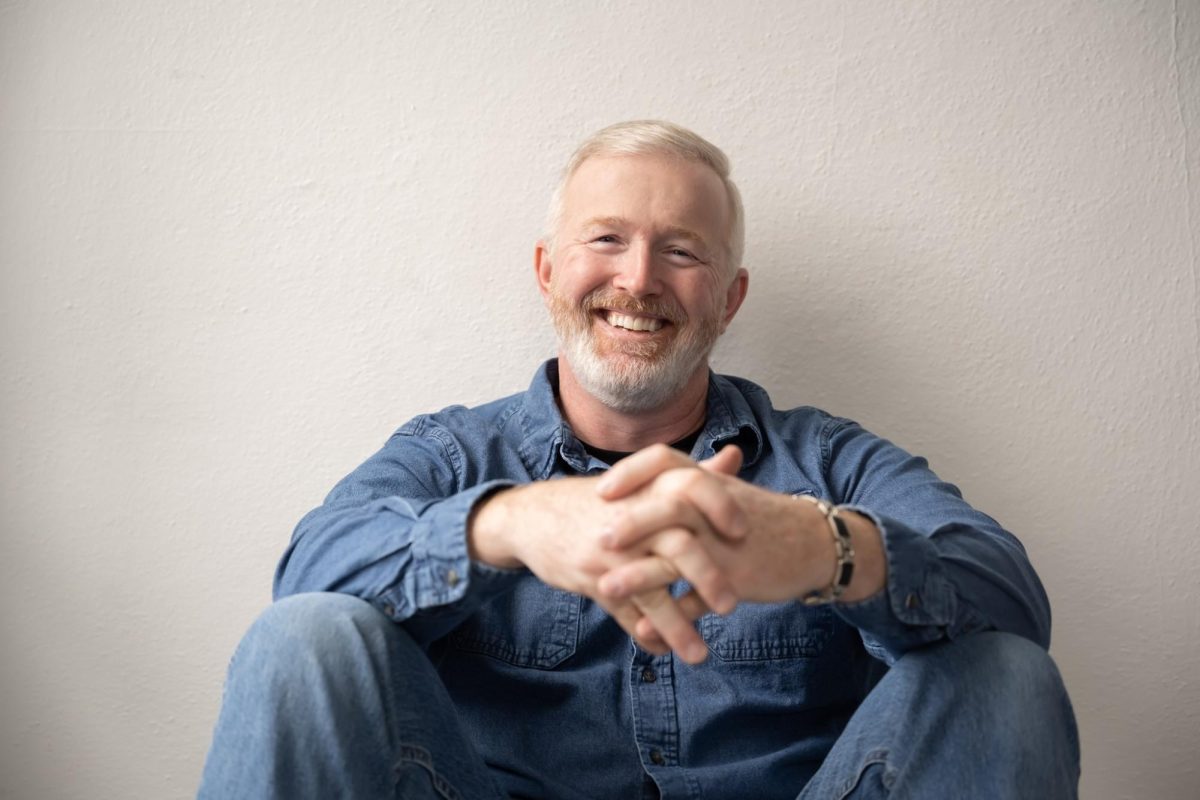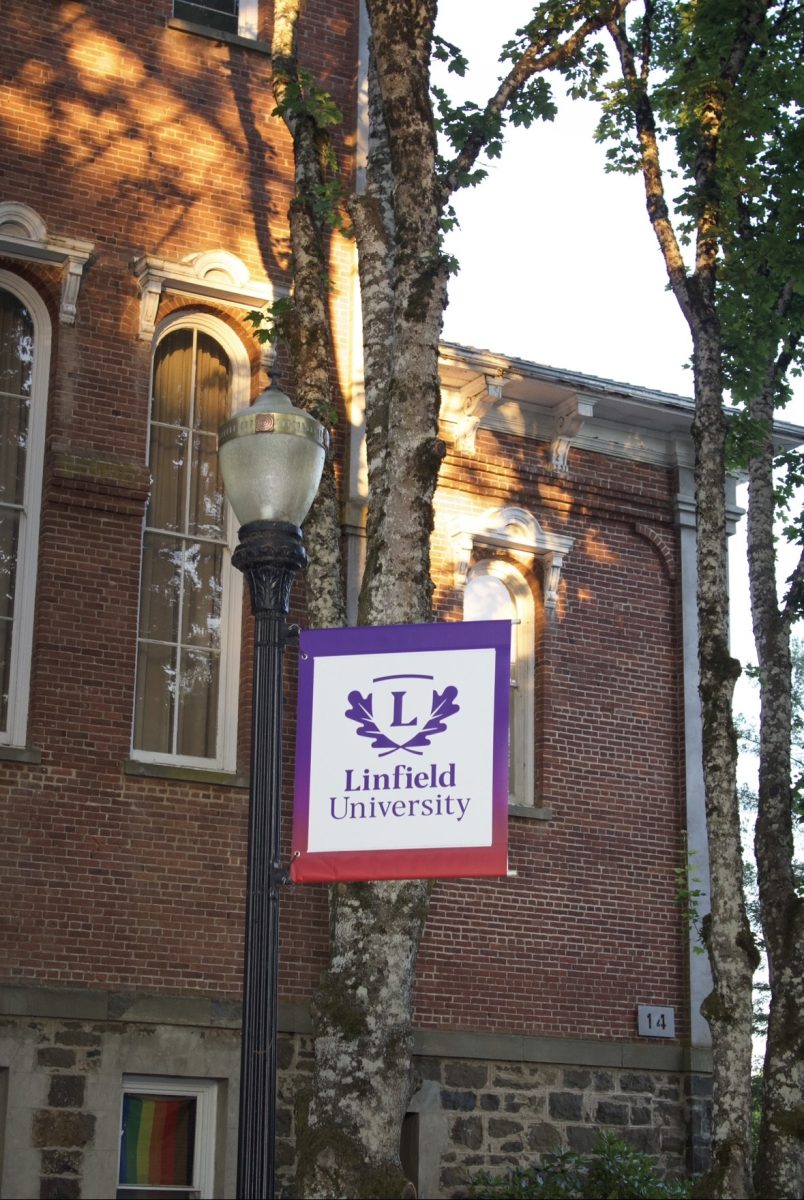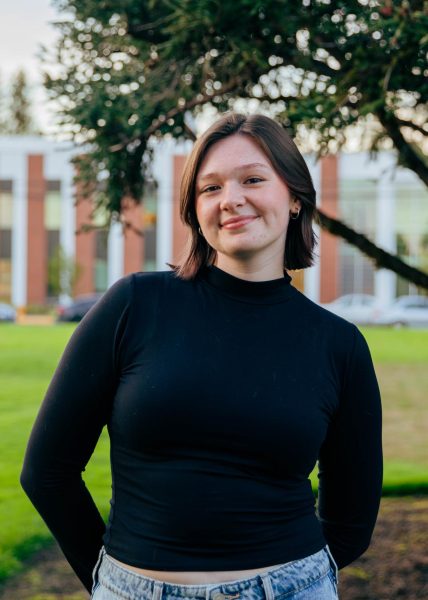Four members of the Hoskissin family, which has deep connections to the Willamette Valley region, came to Linfield to talk about the way art had influenced their lives and relationships. The opening reception for their gallery was on Aug 19 in the Miller Fine Arts Center, and the gallery will be open until Oct 5. It is open Monday – Friday from 9 a.m. to 5 p.m., and on Saturday from noon to 5 p.m. The gallery includes various pottery, sculptures, and paintings from the family members.
Don Hoskissin introduced the event by talking about his background and occupation. Hoskissin attended Western Oregon University and later took some classes at George Fox. He has always had an interest in pottery, which showed in his educational pursuits. After college, Hoskissin became a ceramics teacher. “I don’t like being called an artist,” he said, due to the connotation that art is a hobby.
He takes art very seriously, saying “I’d rather be called a teacher,” as he views teaching as central to his life. Next, he talked a bit about his family, mentioning his wife, Cindy Hoskissin, who is also a potter and currently teaching at Linfield. Their daughters, Mya Cluff and Brittney Bailey, also found their calling in the art world. Hoskissin shared heartwarming stories about Cluff sitting in the pottery studio as a child, telling of how she would burn a piece of wood in the kiln and use it to draw pictures in ash on its surface.
The next member of the family to speak was Bailey. “I call myself the black sheep of the family,” she said, as rather than pursuing pottery, she originally attended Linfield for English and vocal performance. Later, however, during a study abroad program in England, she took an art history class that piqued her interest. This led to her pursuing the subject in her graduate education by entering American University’s feminist art history masters program.
At the time she attended, the program had 100% female faculty. Originally wanting to work in museums, her path instead led her to teaching. She said that teaching is where her work connects back to her family, rather than pottery. Now, she is pursuing a doctoral program at Rutgers University, centering on ways art can subvert gender.
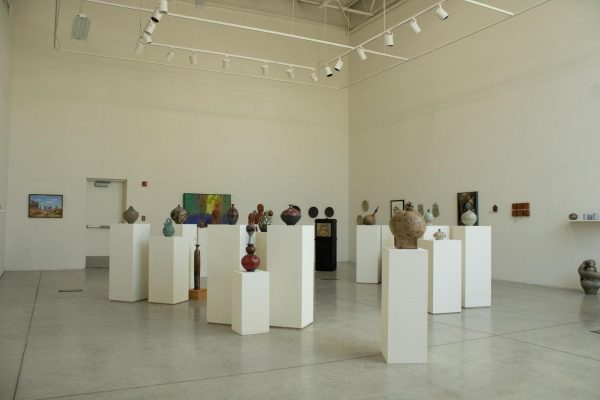
She formatted her speaking portion almost like a classroom lecture and showed “Portrait of Col. William F. Cody” by Rosa Bonheur on the projector. She then asked the audience to point out things they noticed about the painting, explaining the history of the painting and the artist.
Next, her sister Cluff spoke. She has stayed close to ceramics, but instead of being a potter like her parents, she is a sculptor. While obtaining her Bachelor of Arts, she had her first child, thus much of her art centers around her own experience with motherhood. She showed pictures of some of her art pieces, including “Where Do You End And I Begin,” a series of tiles that were sculpted to look like pictures of her and her first child.
She worked with her mother on a similar piece, where her mother crocheted squares for a baby blanket and Cluff dipped them in clay slip and fired them in a kiln to make them ceramic. In some of her more recent art, she uses the image of a pelvis to draw a connection between the idea and imagery of “memento mori” and the experience of motherhood.
Finally, her mother, Cindy Hoskissin, explains what it’s like to work with pottery and why it is her chosen art medium. She titles her segment “Why Clay?” Hoskissin explained that clay comes from the earth, but must be refined in order to be used in art. It has unique properties, in that it sticks and stretches. “Art therapists call ceramics the optimistic art,” she said, as “you can only work up.”
Cindy Hoskissin, like her husband and daughter, is a teacher who currently works at Linfield. She frames her portion through the lens of problem-solving. In her classroom, she gives her students a “problem,” or a prompt, pushing students to problem solve using clay. The gallery will be open for all students who wish to view it until Oct 5.

